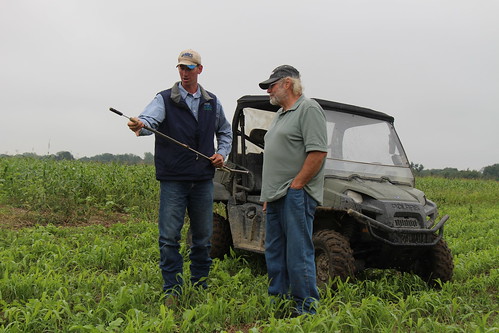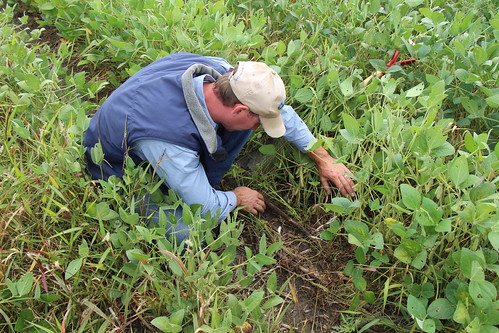
Demand for fresh lamb from five star restaurants drives Bob Corio’s use of cover crops and better forages that provide feed but also build organic matter in the fields he farms in Union County, South Dakota.
“We needed something else for our sheep to eat other than hay,” says Corio, who has a flock of Dorper sheep and a herd of Dexter heritage breed cattle on their farm outside of Jefferson.
“I’m always concerned about the animals. I want something for them to graze all of the time. And, I want my sheep to graze at least until the snow hits. They grazed all Winter last year, but I started supplementing with hay and baleage in mid-January,” says Corio.
“The sheep walk the whole 160 acres. After they graze that field, then they walk another 160 acres,” says Corio, who operates Dakota Harvest Farm. “The sheep get exercise and that makes the meat tender.”
He sells lamb to fine restaurants, at a farmers’ market in Omaha, ships to customers in five states and has a waiting list for new customers. “I’ve got way more demand than I can meet,” he says.”
Now, Corio’s goals are keeping the resources healthy to sustain the productivity of his successful business.
Corio started seeding turnips five years ago after harvesting small grain and after seeing a neighbor seed turnip after chopping silage. Then, he tried cereal rye grain and a “forage” winter wheat.
With the help of USDA’s Natural Resources Conservation Service (NRCS), Corio keeps experimenting with different cover crop combinations, rates and timing. While these variables change each year, the goal remains the same: Provide as much forage as possible during the year for his sheep.
Cover crops do more than provide forage for Corio’s sheep. They are reviving soil life in an 80-acre field that was under water for months after the Missouri River flooded in 2011. “The flood deadened the land,” Corio says. “After the flood, I planted cover crops on that field through the NRCS’ Environmental Quality Incentives Program (EQIP).
“I am trying to get my cover crops to eat up and incorporate the manure I spread into the soil without tilling it.” Corio says he’s learned from the practices of Gabe Brown, a well-known cover crop innovator and cattleman from North Dakota.
Jeff Loof, NRCS District Conservationist for Union County and Clay County says, “Corio is on the cutting edge of cover crop and livestock innovation. When I want to see unique ideas and what’s happening out in the countryside, I check to see what Corio’s doing now.”
Corio has continued to no-till for 32 years because of the financial benefits. “My input costs are so much lower with a no-till farming system and it saves time. We’ve got three grandkids, and I don’t want to spend all of my time on the tractor.”
Corio is one of several South Dakota crop farmers working with the NRCS to evaluate “the Haney test” – named after USDA Agricultural Research Service Scientist Rick Haney.
“The test measures the microbial activity in the soil,” says Eric Barsness, NRCS conservation agronomist.
In healthy soil, microscopic life and processes below ground are more abundant than life above the ground, explains Barsness. Biological activity is essential for a balanced soil ecosystem.
Conventional Soil Tests will not provide the carbon to nitrogen ratio. “As part of the pilot project, we are analyzing Corio’s soil to see how the carbon to nitrogen ratio is influenced by the biological activity of the soil and the species of cover crops planted,” Barsness says.
Soil science has become quite complex with farmers needing an understanding of the chemical, physical as well as the biological aspects of soil. And, an understanding how their above ground management affects what is happening below ground.
That knowledge level is growing for farmers, such as Corio, because the economics of his sheep marketing operation are necessary and support his goals of keeping the resources healthy.

